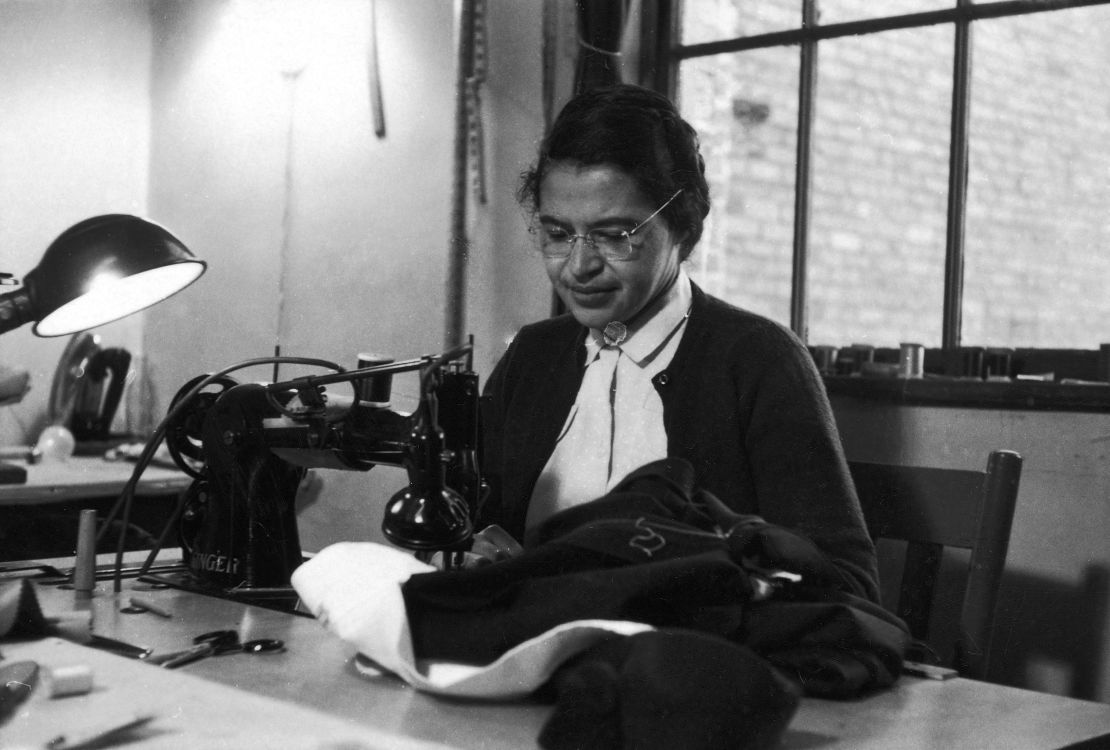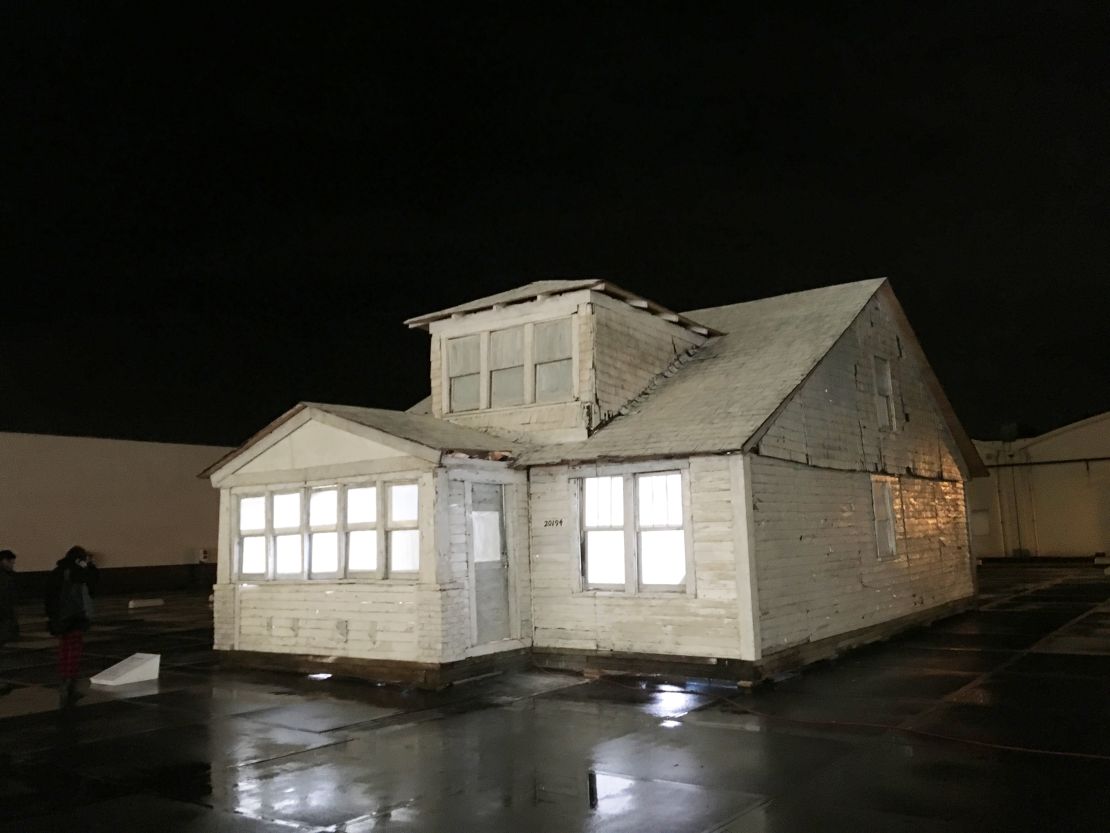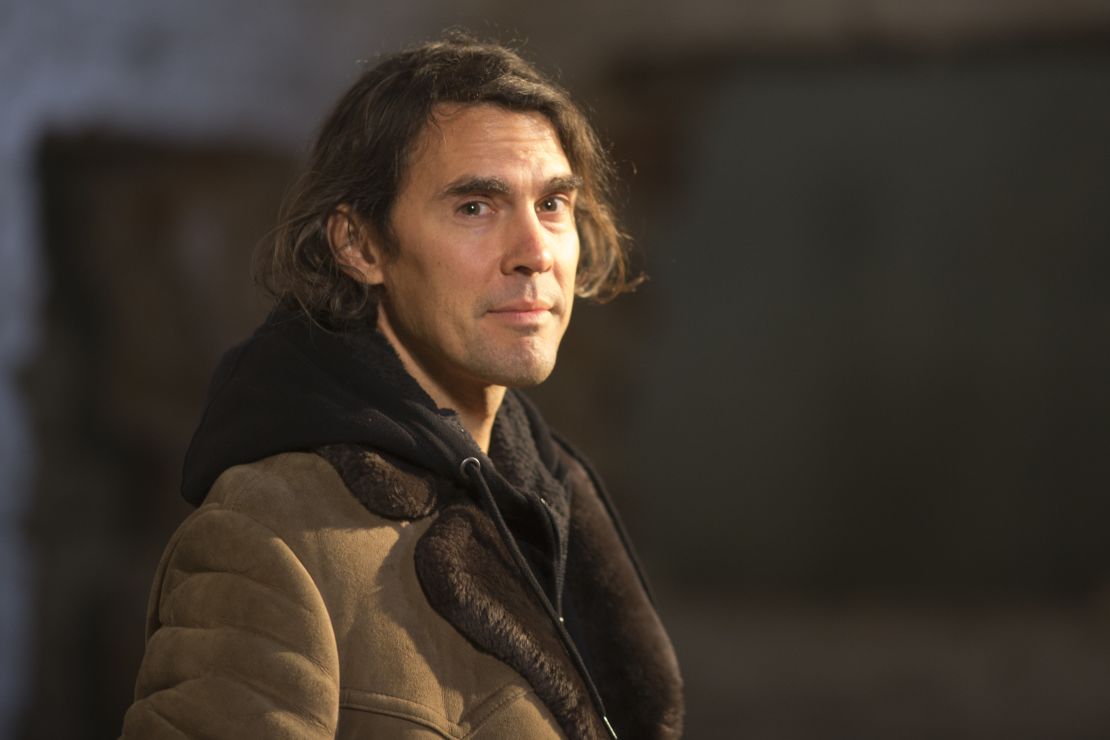Story highlights
Berlin-based artist Ryan Mendoza has rebuilt Rosa Parks' home in Berlin
The derelict home was initially set for demolition
Mendoza dismantled the house and shipped the parts to Germany
The rebuilt home is now open to visitors on April 28-30 as part of Berlin Gallery Weekend
Rhea McCauley was tired. She had been trying to save her aunt’s crumbling Detroit house for more than a decade, to no avail.
The black and white clapboard house was beyond repair – the roof had collapsed and although the façade was still standing, the entire back wall had fallen away, exposing the living room, kitchen and bedrooms to the open air.
It was slated to be demolished, just one of 80 thousand derelict homes blighting Detroit.
“I watched the abuse of the property,” she tells CNN over the phone. “There was drug use, pilfering of the home. The furnace and wiring pulled out. Then the property flooded and mold set in.”
But this was no ordinary home, she argued, the building had historic value – It was the home of her aunt, the world-famous American civil rights leader Rosa Parks.
Persecuting an activist
The woman who refused to give up her seat on a bus to a white man in Montgomery, Alabama in 1955. It was a simple act that sparked a historic boycott and launched a nationwide civil rights movement.
Saving Rosa Parks' home from destruction
For many, this is the Rosa Parks they know, her black and white mug shot staring at the police that arrested her, quiet but defiant.
But not many know what happened after. She faced daily threats of violence. She lost her job as a seamstress after economic sanctions were imposed against civil rights activists. Her husband quit his work when he was barred from mentioning his wife or her activism.

She decided to pick up and join her brother in a city where so many other black families were hoping to make a better life – Detroit.
“My dad had been begging over the years for Auntie Rosa to please move up here,” McCauley explains. “Now, maybe you think that when Auntie Rosa came up here she had cash, like a big roll of cash. No. Penniless. She was completely penniless.”
Her brother’s home in Detroit was modest. A small, two-story home and Parks – who had no children of her own but plenty of nieces and nephews – became just one member of a family of 13 kids living in a three-bedroom house.
An unlikely hero
For Parks’ remaining family, it’s important for the world to know the hardship she faced after her her historic protest and how she overcame it and committed herself to activism in Detroit.
“As a kid, I never thought we were really poor,” McCauley recalls of her childhood in the house. “But we were on welfare. And I remember once my mother had one can of milk to feed 13 kids with!”

But as the family members grew up, the house was left behind, moving from owner to owner. When Rhea McCauley went back to her childhood home, she found it was set to be demolished.
First, she paid $500 to pull the house off the demolition list. Then, she went to dozens of people hoping to find an investor that would rehabilitate the house into a memorial or a museum. But she was told it would be impossible: Nobody wanted to sink as much as $20 thousand into restoring the badly damaged home.
“There was nothing I could do to protect the property. I talked to neighbors. I asked for help. You could use the word ‘beg’,” she says. “I begged several organizations that Auntie Rosa worked with because I thought they loved her. But no, they didn’t want to help me restore the property.”
So, if the house could not be restored how could it be saved?
The answer came in an unlikely form – Ryan Mendoza, an American artist living in Berlin, was looking for houses that resembled his childhood home in Pennsylvania as a way to reconnect with his home country. Detroit, a city with more than 80 thousand derelict homes set for demolition, was an ideal place to look.
“All of my work deals with things and people who have been forgotten on some level.” Mendoza explains to CNN. “Detroit is one of the most vulnerable cities in the U.S. right now and real estate prices are so low that when we had this idea – Let’s bring this house from the United States, cut it up in pieces and ship to Europe. Detroit was a place we could do that.”
Dismantling history
He had already bought one derelict home in Detroit and turned it onto an installation he called “The White House” now on permanent display at the Verbeke Foundation in Belgium.

It was a local Detroit TV personality, Greg Dunmore, and his producer/photographer, Joel Boykin, who put Mendoza and McCauley together.
“I said: Rhea, there is this artist who I think is absolutely brilliant,” Dunmore explains over the phone to CNN. “You have got to meet him. He takes a home and turns into an art piece. Would you be interested in meeting him?”
They took Mendoza for a cruise past the crumbling home, and the look on Mendoza’s face upon seeing the home convinced Rhea it was the right move.
“I could see he was an American who really cared. And he loved Auntie Rosa. But he also really cares about Detroit, and that’s important,” she says.
It took 18 days to dismantle Parks’ house. They began with the roof and worked their way down to the wooden floorboards. After chipping away decades of built-up linoleum and paint, Mendoza smoothed out the original floorboards and imagined how they might be lit in an installation.
“Things become important when they are symbolic,” he tells CNN. “So, of course the floor that she walked on. You have to ask yourself – Is this something that is worthless or is it priceless? And right now in America, this house and the floor she walked, seems worthless.”
At first, neighbors viewed Mendoza with suspicion and threatened to derail the project. But as he continued to work, a diverse group of volunteers began to help out.
Local “camera activist” and neighbor, Jonathan Pommerville brought a generator and pitched in with a crowbar to lift up the floor planks. Neighbors Titus and Orlando helped to load the heavy door frames. And a kindly neighbor across the street, Miss Ann, brought the workers lunch every day.
Mendoza’s wife Fabia filmed the entire dismantling of the house for a film called “The White House Documentary.”
She captured some extraordinary moments as volunteers and neighbors come to pay their respects to the home of Rosa Parks.
They sing spontaneously to the camera and recite poetry. To watch the video is to witness a eulogy from a community trying to save a forgotten piece of American history, even if it means shipping it out of the country.
After more than two weeks of work, volunteers, neighbors and supporters gathered to say goodbye, including the colorful members of Detroit’s East Side Riders bicycle club.
The remaining carcass of the house was draped with a tarp with the words “Out of Love” painted across it. McCauley made an impassioned speech in front of the home she had once lived in, just before the bulldozers came to knock it down.
From Detroit to Berlin
More than four thousand miles from Detroit, in a former Berlin distillery and now arts space, Mendoza speaks about his plans for the house.
He now has a shipping container filled with roof tiles, windows, and doors next to his Berlin studio. He’s begun by pouring the concrete foundations but is reluctant to let anyone see the work in progress and talks to CNN in front of the tarp that once draped the house.
“This is not where the house is going to be rebuilt,” he explains. “I wanted to keep that a bit of a secret.”

Slowly, he says, he will put this piece of American history back together even though he’s still not sure how the art installation will take shape or which art space will exhibit the piece. He dreams big: An installation on the lawn of The White House.
“I would love for Michelle Obama see this and say: a piece of American history has got to come back home,” He imagines out loud. “I can see it from above. I can see the White House there and this tiny, insignificant black house staring the White House down.”
While waiting for the final project, McCauley has already started work on a Rosa Parks community garden.
Where the house once stood, she has planted fruit trees and vegetable patches and pans to donate their produce to the local food bank, preserving Parks’ legacy and keeping cherished childhood memories of Auntie Rosa alive.
Update: Visitors can see Rosa Parks’ home in Berlin April 28-April 30 as part of Berlin Gallery Weekend.










